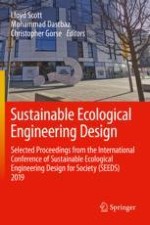2020 | OriginalPaper | Buchkapitel
Performance Evaluation Based Claims Process for Insuring Energy Performance of New Dwellings
verfasst von : Rajat Gupta, Matt Gregg, Agnese Salvati
Erschienen in: Sustainable Ecological Engineering Design
Aktivieren Sie unsere intelligente Suche, um passende Fachinhalte oder Patente zu finden.
Wählen Sie Textabschnitte aus um mit Künstlicher Intelligenz passenden Patente zu finden. powered by
Markieren Sie Textabschnitte, um KI-gestützt weitere passende Inhalte zu finden. powered by
